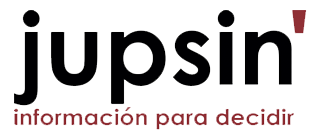Two new reports have been released on the subject of education in Europe. The OECD’s 2017 edition of ‘Education at a Glance: OECD Indicators’ and the European Agency for Special Needs and Inclusive Education (EASNIE) study ‘Inclusive education for learners with disabilities’ provide a wealth of data and analysis on the key aspects related to education in EU countries and beyond.
Drawing on several educational data sources, the studies report on progress made across a range of indicators, current challenges facing educational systems, and perspectives on the future of education in Europe. One of the areas of focus in both studies is the subject of Early Childhood Education and Care (ECEC).
Focus on ECEC participation rates
The OECD report provides a comprehensive overview on the similarities and differences between indicators of ECEC systems around the world. One set of findings is focussed on issues related to ECEC participation rates.
As parents are increasingly likely to be in the workforce, and economic prosperity depends on the existence of a high employment-to-population ratio, ECEC has become a policy priority in many countries.
Across OECD countries that are members of the EU (the EU22), 90% of four-year-olds are enrolled in pre-primary and primary education. This figure is three percentage-points higher than the OECD average
Across OECD countries that are members of the EU (the EU22), 90% of four-year-olds are enrolled in pre-primary and primary education.
This figure is three percentage-points higher than the OECD average. However, participation rates vary greatly even within the EU22, from 98% or above of children participating in Belgium, France and the UK to less than 50% in Greece.
Beyond keeping parents in employment, the importance of ECEC provision also stems from its short- and long-term benefits for children.
Attending ECEC provision of a high quality were shown to be associated with positive effect later in life on those enrolled, according to the OECD report. In this report, high-quality ECEC is characterised by lower child-to-teacher ratios and higher public expenditure per child at the pre-primary level.
In particular, the analysis of the educational outcomes of 15-year-olds from the 2015 OECD Programme for International Student Assessment (PISA) suggests that the reported quality of provision and length of attendance in an early childhood setting is associated with children’s long-term educational and wider success.
The report found that accessing ECEC provision for a minimum of two years is associated with positive outcomes later in life. The relationship persists even after controlling for socio-economic status.
High-quality provision essential for ECEC to bring benefits
The EASNIE report commissioned by European Parliament also highlights the need for educational systems to provide high-quality education for all learners. The study found that children with disabilities are much more likely to be disenfranchised from the mainstream education system.
Indicators suggest that this issue arises because current demographics and population fluctuations in many European countries are negatively affecting the enrolment of many at-risk groups, particularly those with disabilities, within all forms of education.
As highlighted earlier, the quality of ECEC provision is of great importance for children’s long-term educational and social outcomes
As highlighted earlier, the quality of ECEC provision is of great importance for children’s long-term educational and social outcomes. ECEC child-to-teacher ratios are examined in the OECD report, to determine the resources devoted to education in this area.
Child-to-teacher ratios are measured by dividing the number of full-time children at a certain level of education by the number of full-time teachers at the same level, where lower ratios are typically associated with better learning outcomes.
The EU22 has an average of eleven children to each individual ECEC staff member, indicating a lower child-to-teacher ratio than the OECD average of 13. However, when all contact staff are considered (e.g. teachers’ aides) the OECD average child-to-staff ratio falls to eleven.
For EU22, the average remains unchanged and equals 11. Nonetheless, child-to-staff ratios are just one measure of ECEC quality. The extent of funding, how it is allocated and its impact on quality of provision also needs to be considered.
Adequacy of ECEC funding
As noted in the OECD report, when expenditure (as a percentage of GDP) on early childhood educational institutions is considered the EU22 average of 0.8% is equal to that of the OECD average. This is despite EU22 nations employing more fully qualified teachers.
The EU22 average expenditure on primary and secondary education is 1.4% and 2.1% of GDP respectively
However, public expenditure on ECEC is relatively low when compared to expenditure on primary and secondary education. The EU22 average expenditure on primary and secondary education is 1.4% and 2.1% of GDP respectively.
The OECD report also finds that the proportion of children enrolled in private ECEC institutions is considerably larger than those enrolled in private primary and secondary education.
This suggests that the current quantity and/or quality of publically-funded ECEC places is not meeting the demand of parents, who are turning to private institutions. On average, across the EU22 countries, 25% of young children in ECEC are receiving provision from private institutions.

Advancing knowledge on children’s early learning experiences and learning environments
Wider OECD’s work to develop ECEC data providing the foundation for future analysis of what works for young children includes:
- the International Early Learning and Child Well-being study (IELS), which aims to provide information for policymakers and practitioners at national and international levels on factors that improve children’s early learning experiences and support their development and overall well-being. The study is currently in the field trial phase in three countries, with study results to be released in 2020.
- the Starting Strong Teaching and Learning International Survey (TALIS Starting Strong Survey), which will provide findings on early childhood settings from the perspective of childcare practitioners. The study builds on the OECD Teaching and Learning International Survey (TALIS) and aims to inform policy discussions on staff’s work organisation and the overall quality of the workforce in the ECEC settings. The field trial for this study was completed in nine countries in 2017, with the main survey planned for 2018, and analysis and reporting in 2019.
EPIC also contributes to discussions on ECEC services provision
Over the last few years, several EPIC (European Platform for Investing in Children) policy briefs have been released focussing on issues related to ECEC:
- Quality and impact of Centre-based Early Childhood Education and Care reviewed a range of indicators that have been linked to ECEC quality, with a focus on understanding how particular quality indicators relate to the short- and long-term impacts.
- Breaking the cycle of disadvantage examined the association between ECEC and progression to higher education in Europe.
- The role of the European Social Fund in supporting childcare provision in the EU offers some practical examples of using EU funding to extend ECEC provision.













